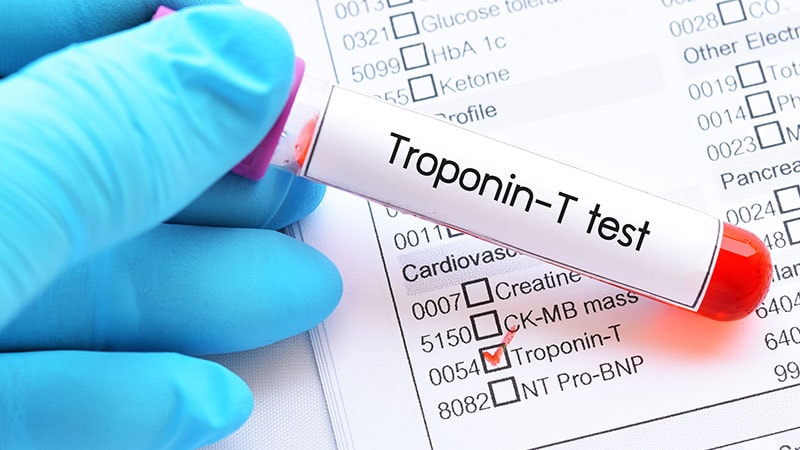TOPLINE:
Perioperative myocardial injury, reflected by release of high-sensitivity cardiac troponin T, is associated with 30-day mortality after various cardiac surgeries at postoperative prognostic cutoffs higher than proposed in current definitions, new research suggests.
METHODOLOGY:
-
This retrospective, observational study included 8292 consecutive patients (median age, 68 years; 31% women), 24% with a history of myocardial infarction) and 14% with a prior percutaneous coronary intervention (PCI), who underwent cardiac surgery. For all patients, high-sensitivity cardiac troponin T (hs-cTnT) values were available.
-
Researchers used postoperative troponin release levels to assess the association of perioperative myocardial injury with 30-day mortality and long-term survival for three surgery categories ― coronary artery bypass grafting (CABG), isolated aortic valve replacement (AVR), and all other cardiac surgeries.
TAKEAWAY:
-
Death within 30 days occurred in 2.5% of the patients (1.7% for CABG, 1.7% for AVR, and 3.1% for other cardiac procedures).
-
High levels of hs-cTnT were associated with 30-day mortality; the risk of death increased with every unit of log peak hs-cTnT value after CABG (hazard ratio [HR], 4.79; 95% CI 2.898 – 10.21), after AVR (HR, 2.33; 95% CI, 0.95 – 13.82), and after other cardiac surgeries (HR, 1.99; 95% CI, 1.56 – 2.65).
-
The threshold hs-cTnT level for predicting 30-day mortality was 2385 ng/L (170 times the upper limit of normal in a seemingly healthy population [URL]) for isolated CABG, 568 ng/L (41 URL) for isolated AVR, and 1873 ng/L (134 URL) for other cardiac surgeries, which are markedly higher cutoffs than suggested in current definitions.
-
The predictive value of hs-cTnT for mortality decreased markedly over time, reaching an area under the curve of 0.586 for 5-year mortality, possibly because of patients with high postoperative biomarker levels dying early in follow-up.
IN PRACTICE:
“These results provide important novel insights into the association of hs-cTnT with 30-day mortality and indicate that the thresholds used in current definitions of peri-procedural myocardial injury are too conservative in predicting mortality,” the authors write.
In an accompanying editorial, P. J. Devereaux, MD, PhD, Population Health Research Institute, Hamilton, Ontario, Canada, and colleagues said the study authors “make an important contribution” to the field. They note that the current diagnostic criteria for perioperative myocardial infarction/injury “need to be updated with these high-sensitivity cardiac troponin data.”
SOURCE:
The study was conducted by Leo Pölzl, MD, Department of Cardiac Surgery, Medical University of Innsbruck, Innsbruck, Austria, and colleagues. It was published online September 18, 2023, in the Journal of the American College of Cardiology.
LIMITATIONS:
The single-center study was retrospective and observational, so there may be confounding and bias. The statistical method used to determine cardiac troponin values may have resulted in thresholds with a lower sensitivity. The study used the highest value measured during the first 72 hours after surgery, which could lead to different results than would have occurred had each postoperative day been assessed individually. Because the “other” cardiac surgery group was highly heterogeneous, results don’t necessarily extrapolate to all patients undergoing non-CABG, non-AVR surgery.
DISCLOSURES:
The study authors have no relevant conflicts of interest. Devereaux has received grants from Abbott Diagnostics, AOP, AstraZeneca, Bayer, Boehringer Ingelheim, Bristol-Myers Squibb, Cloud DX, Coviden, Octapharma, Philips Healthcare, Roche Diagnostics, Roche, Siemens, Stryker, and Trimedic; has participated in advisory board meetings for GlaxoSmithKline, Bayer, Quidel Canada, and Trimedic; has participated in expert panel meetings with AstraZeneca, Boehringer Ingelheim, and Roche; and has participated in international meetings with AOP. The editorial has disclosures of other authors.
For more news, follow Medscape on Facebook, X, Instagram, and YouTube.
Source: Read Full Article
